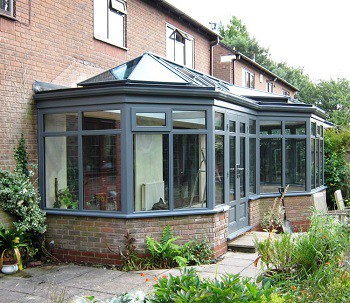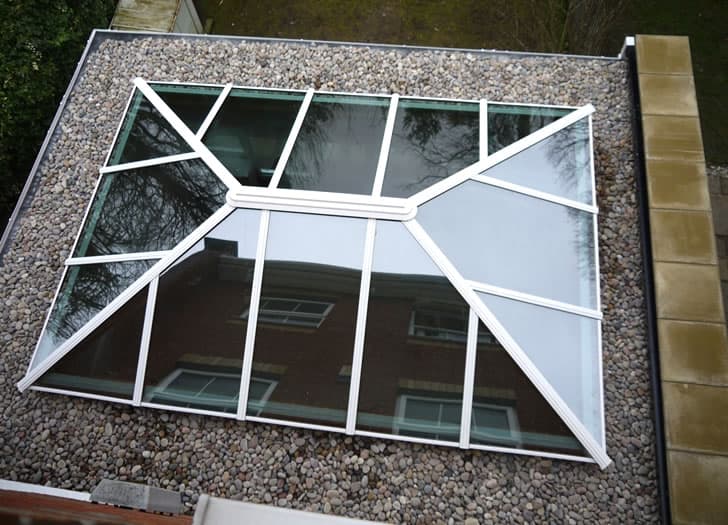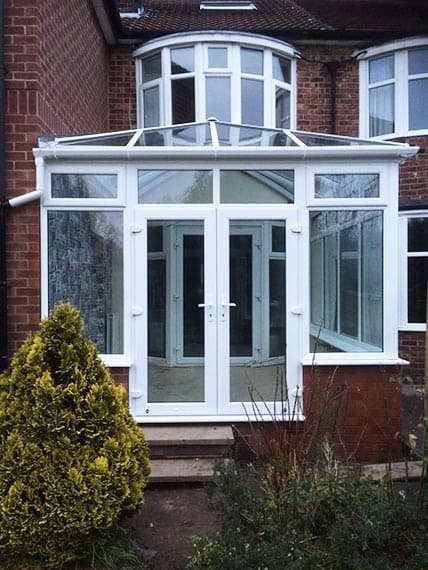Orangery vs Extension: Choosing the Best Option for Your Home
Understanding the key difference between orangery and extension options can be crucial when planning to expand your living space. As...
Read MoreLast Updated: 29 April 2025
 Orangeries, as we all know, make beautiful living spaces for your home. But because they’re made mainly of glass, keeping them warm in the winter is always going to be a challenge – as on its own, glass itself is a relatively poor insulator.
Orangeries, as we all know, make beautiful living spaces for your home. But because they’re made mainly of glass, keeping them warm in the winter is always going to be a challenge – as on its own, glass itself is a relatively poor insulator.
Fortunately, there are a number of things you can do to help keep out the cold so that you can use your orangery all year round. Whether you’ve got a hardwood orangery or one made from uPVC, here are our top 5 tips for keeping your orangery nice and toasty this winter – and the best thing is they don’t all have to cost the earth.
This may seem like an obvious one, but adding a small electric heater to your orangery can make it a lot more comfortable during the colder months of the year. You’ll need to ensure you have a plug socket nearby and for larger orangeries, it may not be as effective as the heat can quickly dissipate.
As orangeries make great hosting spaces, why not try adding some candles? Not only will this create extra light and warmth, but it’ll contribute to a pleasant ambiance – perfect for relaxation and entertaining guests.
 We realise that this is quite an investment, but if you’re serious about transforming your orangery into a space you can truly use all year round, you’ll want to consider replacing its roof with a more energy-efficient alternative.
We realise that this is quite an investment, but if you’re serious about transforming your orangery into a space you can truly use all year round, you’ll want to consider replacing its roof with a more energy-efficient alternative.
If your orangery came installed with an old polycarbonate roof, you’ll definitely want to upgrade to a more efficient glass roof or preferably a solid or tiled roof alternative. Dated polycarbonate roofs are not only poor insulators, but they’ll also contribute to that ‘greenhouse’ feeling during the summer where it will become too hot for comfort. Modern tiled roofs are amazingly light and easy to install, and can significantly increase the efficiency of your orangery.
Whilst the majority of energy from your orangery is going to be lost through rising heat (through the roof and windows), the floor can make a big difference to how warm your orangery feels.
In addition to ensuring that your orangery has a high-quality underlay, it’s also a good idea to lay down either carpet or rugs so that when walking around in your orangery you’re not walking on tiling or laminate flooring which has retained the cold temperatures from outside.
If you’re willing to invest more to make the ultimate all-year living space, then it may be worth looking into installing underfloor heating. You’ll get the choice of either electric or wet underfloor heating depending on your personal preference and floor material, and while both have high initial costs, they can be incredibly effective and you’ll reap the rewards for years to come.
 One quick, easy and cheap way to keep more heat in your orangery this winter is to stop the cold air getting in! Orangeries have a lot of places warm air can escape, so make sure all windows and doors are fully sealed; use draught excluders to seal the bottom of leaky doors, and install blinds and drapes on your windows to help keep as much warm air inside as possible. The great thing about drapes and blinds is that they can simply be retracted during the summer to let in light and heat from the sun.
One quick, easy and cheap way to keep more heat in your orangery this winter is to stop the cold air getting in! Orangeries have a lot of places warm air can escape, so make sure all windows and doors are fully sealed; use draught excluders to seal the bottom of leaky doors, and install blinds and drapes on your windows to help keep as much warm air inside as possible. The great thing about drapes and blinds is that they can simply be retracted during the summer to let in light and heat from the sun.
Even the most efficient glazing isn’t going to be able to rival a solid brick wall for insulation, but it’s worth investing in quality windows to ensure that your orangery remains warm this winter.
If your orangery features old windows, then definitely consider replacing your glazed units with modern alternatives. Advances in glazing mean that they can now be supplied with argon-filled units, and provide extraordinarily low U-values to retain as much heat as possible.
For additional inspiration, we’ve also posted links to a number of other orangery installations that we’ve performed over the years below:
 The good news is that, as far as glazed extensions go, you’ve made the right choice when it comes to warmth. Because orangeries have a higher ratio of solid material to glass than conservatories, they retain heat more effectively – generally speaking. However, if you’re undecided on whether a conservatory or orangery is right for you, you needn’t be so hasty because there are many ways the heat retention can be improved upon.
The good news is that, as far as glazed extensions go, you’ve made the right choice when it comes to warmth. Because orangeries have a higher ratio of solid material to glass than conservatories, they retain heat more effectively – generally speaking. However, if you’re undecided on whether a conservatory or orangery is right for you, you needn’t be so hasty because there are many ways the heat retention can be improved upon.
Specially insulating uPVC frames are one way to make a conservatory warmer. You can have low-emissivity glass fitted to your conservatory, this will keep as much heat as possible within your conservatory, conservatory can be fitted with low-emissivity glass that radiates only the smallest amount of heat, keeping most of it in the conservatory. Plus, many of the above tactics for keeping your orangery warm will work just as well for warming a conservatory.
‘What is the difference between a conservatory and an orangery’ is a question we’re asked a lot here at Reddish Joinery, and in addition to orangeries typically being warmer than conservatories, there are other differences between them.
Traditionally, an orangery could be defined as an extension with a glass roof that covers less than 75% of the overall roof area and glass walls covering 50% of the total wall area. They are also typically known for having a lot of brickwork, a flat roof and a central roof lantern.
Conservatories, on the other hand, used to have at least 75% of the roof glazed and 50% of the walls. They also tend to have centralised pitched roofs, the edges of which the conservatory framing goes straight up from the ground to meet.
However, today’s conservatories can be fitted with tiled roofs and orangeries can be built without brick pillars, instead of having glass from the floor to the ceiling. Therefore, the lines between the two are becoming increasingly blurred. The fact remains, however, that either option is a great way to add more living space to your home.
For more information about home improvements offered by Reddish Joinery, please give us a call at 0161 969 7474, or send us an email.
Understanding the key difference between orangery and extension options can be crucial when planning to expand your living space. As...
Read MoreUnderstanding building regulations for orangeries is crucial when planning this elegant home extension. While orangeries can transform your living space...
Read MoreLooking to add a touch of elegance and value to your property? Want to increase your living space and boost...
Read MoreWhen considering home extensions, orangeries often emerge as a superior choice – and for good reasons that might surprise you....
Read More